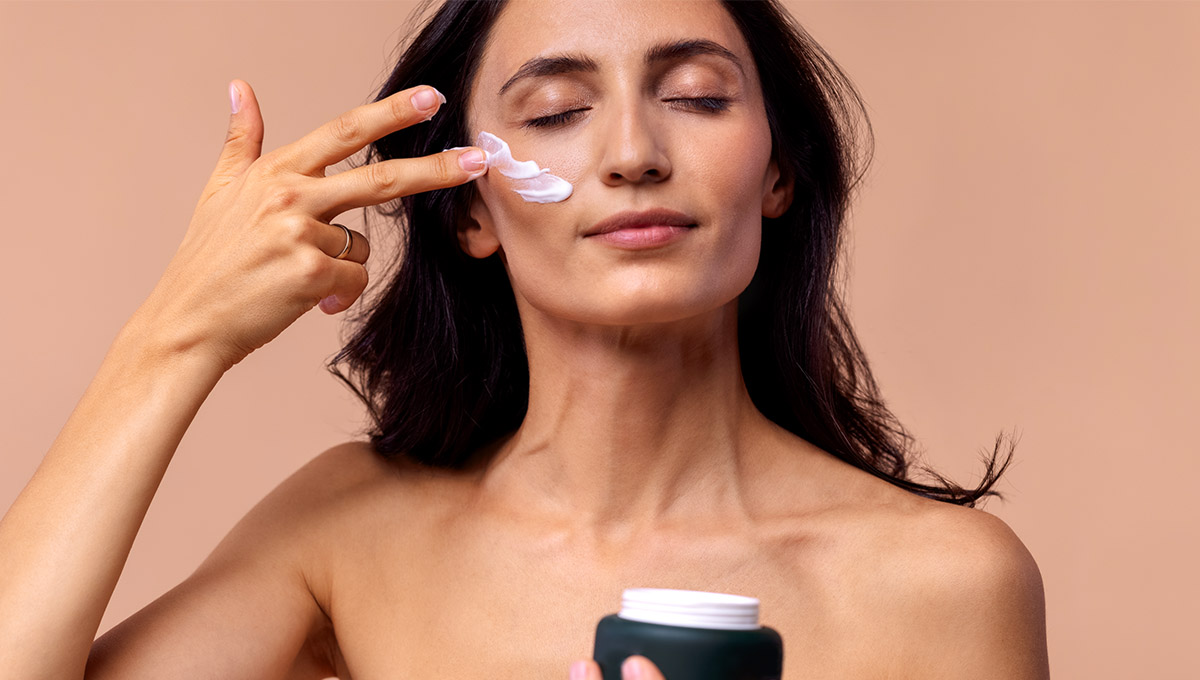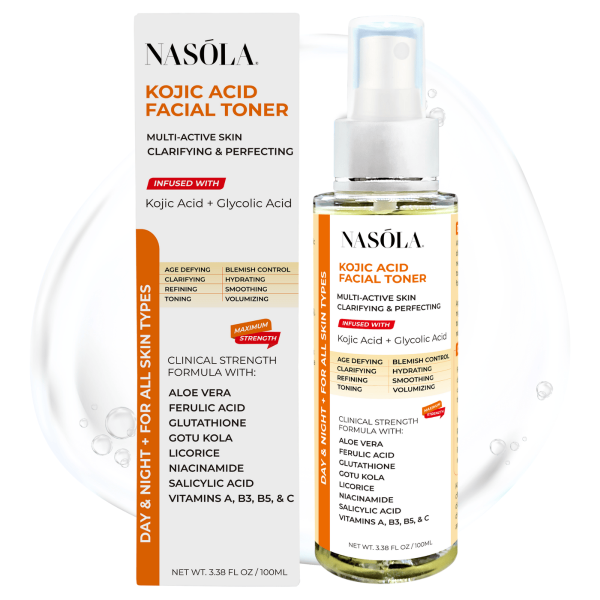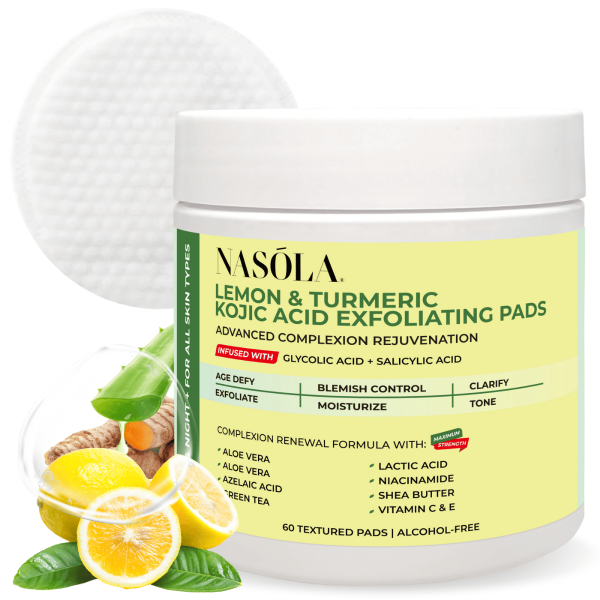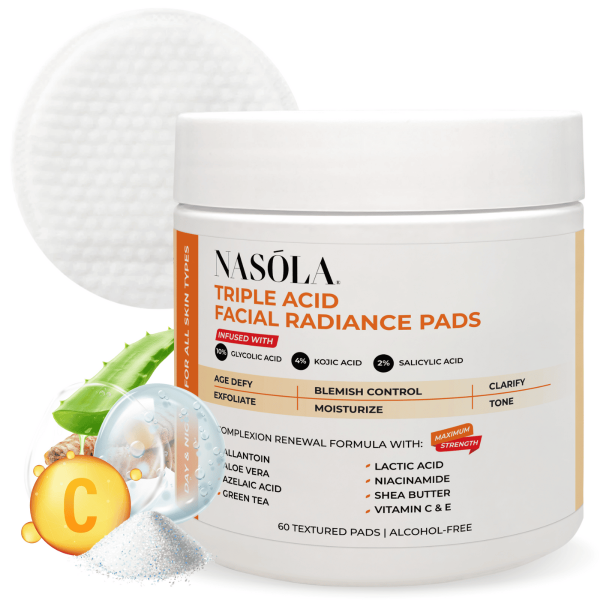If you’ve stared into your mirror under aggressive bathroom lighting, squinting at your reflection and wondering why your skin looks tired even when you’re not… you’re not alone.
From flaky texture to uneven tone, we all go through phases where our skin needs a bit more glow-up. That’s where an alpha hydroxy face cream comes in.
Alpha hydroxy acids (AHAs) are some of the skincare world’s most reliable miracle workers. They melt away dead skin cells, speed up cell renewal, and give you that smoother, brighter, I’m-on-a-vacation kind of glow.
In this guide, I’ll walk you through how these gems work, how to pick the best alpha hydroxy face cream for your skin type, and yes — I’ll show you a few of my favorite go-tos like the Nasola Kojic Acid Cream and the Lemon Turmeric Kojic Acid Exfoliating Pads. Ready to glow? Let’s dig in…
- What Is Alpha Hydroxy Face Cream and How Does It Work?
- The Best Alpha Hydroxy Face Cream for Daily Use
- Benefits of Using Alpha Hydroxy Acid Cream for Face
- Why AHAs Outperform Physical Exfoliants in Face Creams
- Using an Alpha Hydroxy Face Cream With a Toner for Enhanced Results
- How to Introduce an Alpha Hydroxy Face Cream Into Your Skincare Routine
- Ingredient Insight: Alpha Hydroxy Acids in Creams
- Bonus Tip: How to Layer an Alpha Hydroxy Face Cream With Other Actives
- Bonus Header: Can Alpha Hydroxy Face Cream Help With Body Skin Too?
- Conclusion
- Frequently Asked Questions
What Is Alpha Hydroxy Face Cream and How Does It Work?
Alpha hydroxy face cream is like a reset button for dull, uneven, or blemish-prone skin. The magic lies in its key ingredient — AHAs — which loosen the bonds that hold dull, dead skin cells together. This means they can gently slough off, revealing fresher, smoother skin beneath.
And when I say smoother, I mean buttery smooth. Think of it as gently exfoliating while nourishing your face in one go. No scrubbing. No harshness.
AHAs like glycolic, lactic, and citric acid help improve cell turnover. Dead skin cells say goodbye — new, radiant cells step up. Fine lines? Faded. Dark spots? Softened. Uneven texture? Smoothed out.
What’s more?
AHAs boost your skin’s absorption of other products. Creams, serums, moisturizers — everything works better after AHA does its thing.
Glycolic Acid – Deep But Gentle
Glycolic acid is the powerhouse of AHAs — small molecular structure, big results. It’s excellent for exfoliating acne-prone or congested skin. Because it penetrates so deeply, it clears clogged pores and promotes collagen regeneration.
It also reduces the appearance of fine lines and textured bumps, especially around the forehead or nose. That means smoother cheeks, clearer jawline, and definitely fewer breakouts.
Glycolic acid also preps your skin to drink up follow-up treatments like serums or moisturizers, making it a backend hero of any skincare regimen.
Lactic and Citric Acid – Brighten and Pamper
Lactic acid is ideal for those with sensitive skin who need a gentler touch. It hydrates while exfoliating, making it one of the friendliest AHAs out there. If your skin gets irritated fast or feels tight post-cleansing, lactic acid is your friend.
Citric acid, on the other hand, is the brightener in the mix. Think dullness cure. It works to tone the skin, refine the surface, and even out discoloration, especially when it’s team-tagging alongside glycolic or kojic acid.
Used consistently, these AHAs help reduce age spots, sun spots, and leftover scars from those teenage battles with acne. Brighter, more even-toned skin? Yes, please.
The Best Alpha Hydroxy Face Cream for Daily Use

Finding the best alpha hydroxy face cream comes down to what your skin’s asking for — exfoliation, hydration, brightening, or all of the above. A good face cream will balance AHA potency with soothing, nourishing ingredients to ensure gradual, non-irritating transformation.
Here are a few must-check boxes:
- AHA concentration under 10% for daily use
- pH-balanced to optimize exfoliation without stripping
- Ingredients like kojic acid or vitamin C for added pigmentation help
- Lightweight but moisturizing enough to protect the skin barrier
Let me put you on to one of my current favorite obsessions.
Product Spotlight: Nasola Kojic Acid Cream
When it comes to the best alpha hydroxy face cream that does double-duty — exfoliating and brightening — the Nasola Kojic Acid Cream takes the crown.
It combines the AHA effect with kojic acid, an ingredient known for fading dark spots, sun damage, and melasma. Perfect for skin that battles both texture and pigmentation, it absorbs quickly and works beautifully under makeup or layered with sunscreen in the mornings.
And because it’s formulated for daily use, it doesn’t overwhelm sensitive skin. My clients who struggle with hyperpigmentation swear by it to even their skin tone in just weeks.
Soft encouragement? You should genuinely consider adding this to your routine — especially if you want visible results that stick.
Benefits of Using Alpha Hydroxy Acid Cream for Face
So why should you even bother using an alpha hydroxy acid cream for face? Let’s get practical.
You’re not just exfoliating. You’re rebuilding. AHAs work from the top down — encouraging gentle peeling (that you won’t physically see), kicking cell regeneration into gear, and clearing away the gunk that clogs your glow.
A few weeks in? People may start asking what foundation you’re using.
Spoiler alert: you won’t need any.
- Visibly smoother skin
- Softer lines around the eyes and mouth
- Faded acne scars and post-inflammatory hyperpigmentation
- Youthful tightness and improved elasticity
Product Highlight: Nasola Lemon Turmeric Kojic Acid Exfoliating Pads
These pre-soaked pads are a quick swipe away from fresh, radiant skin. With kojic acid, turmeric, and lemon extract, they exfoliate and calm simultaneously.
They’re a morning lifesaver — no sticky residue, no fuss. Perfect to use before your AHA cream and SPF. And… they SMELL amazing (who doesn’t want their skincare to feel a little luxurious?).
If you want to pair a nourishing toner/acid pad with your face cream, start here.
Why AHAs Outperform Physical Exfoliants in Face Creams
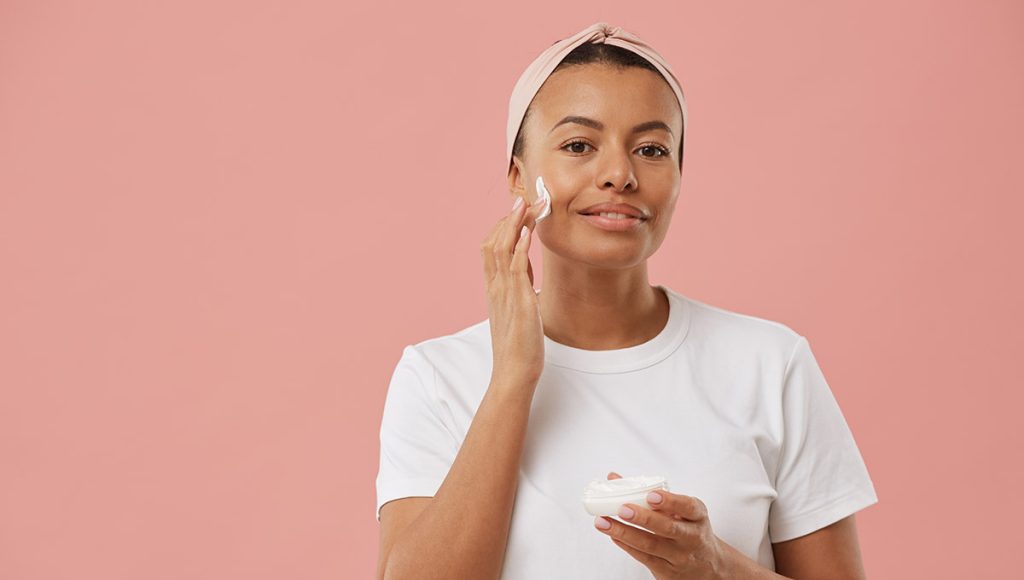
Let’s clear this up.
A physical exfoliant is that grainy scrub you used in your teens — it gives you that squeaky clean feeling, but get this: it also causes microtears in your skin.
Alpha hydroxy acid creams, by contrast, exfoliate evenly, gently, and intelligently.
Here’s why AHAs reign supreme:
- No scratching or tearing of skin
- Gentle enough for delicate, aging, or acne-prone skin
- Penetrate deeper for longer results
- Pair better with other actives and moisturizers
Product Mention: Nasola Triple Acid Facial Radiance Pads
These pads are a triple-threat: glycolic, lactic, and salicylic acids all in one dose. They exfoliate, unclog, and prep your skin in one easy step right before your face cream.
Use 3x a week as a pre-treatment, and trust me — your alpha hydroxy face cream will work ten times harder.
Using an Alpha Hydroxy Face Cream With a Toner for Enhanced Results
Picture this: your skin after toning is like a sponge — soft, open, and ready to soak in whatever goodness comes next. A toner preps your skin, balancing pH so that every drop of your face cream goes deep and performs.
Toning is not optional — especially if you’re using AHA-based products.
- Primes skin for deeper absorption
- Tightens and refines pores
- Helps ingredients penetrate efficiently
- Balances pH post-cleansing
Product Mention: Nasola Kojic Acid Facial Toner
This toner is lightweight, hydrating, and full of pigmentation-targeting ingredients like kojic acid. It’s what I like to call a “quiet achiever” — you don’t notice it at first, but a few weeks in… your skin tells you otherwise.
Pair it with your favorite alpha hydroxy face cream and lock in a pH-balanced, glow-boosting powerhouse routine.
How to Introduce an Alpha Hydroxy Face Cream Into Your Skincare Routine

If you’re new to AHAs, this part’s for you.
Start slow. Build a routine around hydration and consistency. Alpha hydroxy acid cream for face isn’t a one-night miracle — it’s a long-term ally.
- Begin 2–3 times per week
- Always follow with SPF if used in the morning
- Use a creamy or oil cleanser to support moisture balance
- Avoid layering with strong actives like retinoids (alternate instead)
Start Slowly to Avoid Irritation
Your skin has a learning curve. Give it time to adapt.
Start with 2–3 applications per week, then gradually increase. If you feel tingling, that’s normal. Burning? That’s your cue to step back, hydrate, and try again later.
You might also choose to “sandwich” it — apply hydrating serum, AHA cream, then moisturizer. This method works wonders for sensitive skin.
Use SPF in the Morning
This cannot be emphasized enough.
AHAs make skin sensitive to the sun, which means SPF is essential post-application. Use broad-spectrum SPF 30 or higher — daily. Even on cloudy days. Even if you work indoors.
You want the benefits of alpha hydroxy without undoing them with UV exposure, right?
Ingredient Insight: Alpha Hydroxy Acids in Creams
AHAs aren’t just a feel-good term brands use. They’re scientifically-designed molecules that signal your skin to renew itself. These aren’t surface-level; they work from within.
Each acid has a unique profile — different strengths and benefits depending on your skin’s needs.
Let’s demystify them:
What Makes These Acids Effective?
- Tiny molecular size = deeper skin penetration
- Loosens desmosomes sticking dead skin cells
- Encourages epidemic and dermal turnover
- Stimulates collagen + glycosaminoglycan production
In short, AHAs don’t just wash away dullness… they rebuild your skin’s structure. That’s next-level skincare.
Glycolic vs. Lactic vs. Citric Acid
| AHA Type | Best For | Strength | Target Skin Type |
|---|---|---|---|
| Glycolic Acid | Exfoliating deeply | High | Normal to oily |
| Lactic Acid | Gentle hydration | Medium | Sensitive or dry |
| Citric Acid | Brightening and toning | Low-Medium | All skin types (uneven tone) |
Bonus Tip: How to Layer an Alpha Hydroxy Face Cream With Other Actives

Layering skincare isn’t just about piling things on — it’s about harmony.
Use AHAs with:
- Hyaluronic acid (moisture magnet)
- Niacinamide (for barrier repair)
- Ceramides (for recovery and fortification)
Avoid using with:
- Retinol (alternate nights instead)
- Vitamin C (unless your skin is trained and tolerant)
When to Apply Your Alpha Hydroxy Face Cream
- After toner (if using)
- Before heavy moisturizers or oils
- At night for max results (morning OK with SPF)
- On clean, dry skin
Morning vs Evening Routine Suggestions
Morning: Cleanser → Toner → Nasola Kojic Acid Cream → Broad-spectrum SPF
Evening: Cleanser → Triple Acid Pad → Nasola Lemon Turmeric Pad (optional) → Nasola Kojic Acid Cream → Hydrating Moisturizer
Bonus Header: Can Alpha Hydroxy Face Cream Help With Body Skin Too?
Face creams can benefit other areas — especially if you’re dealing with discoloration or rough skin patches.
Alpha Hydroxy Cream on Neck, Chest, and Hands
Neck lines? Chest spots? Hand texture? Your face cream can go the distance here. Apply sparingly and always wear SPF, since these areas show aging just as much (if not more!) than your face.
You’ll thank yourself later.
For Treating Keratosis Pilaris and Uneven Texture on Arms
I often recommend leftover cream at night to be blended into bumpy upper arms — it smooths them out over a few weeks. Consistency is key.
Conclusion
If you’re serious about glow, it’s time to make friends with an alpha hydroxy face cream.
These powerhouse ingredients slough, smooth, tone, and build your best skin — layer after layer. And when you pair your AHA creams with products like the Nasola Kojic Acid Facial Toner or Triple Acid Radiance Pads? That’s when the real magic begins.
No more second-guessing your skincare routine. With the right AHA-based products that match your lifestyle and skin type, healthy, radiant skin doesn’t just happen — it stays.
Your skin deserves this level of care. So… are you in?
Frequently Asked Questions
Yes, you can use it daily if it has a low concentration of AHAs (preferably under 10%) and is balanced with hydrating ingredients. Always monitor how your skin responds and use SPF in the morning to avoid sun sensitivity.
The Nasola Kojic Acid Cream is a wonderful option. It balances exfoliation with hydration and includes kojic acid to combat hyperpigmentation—without overloading sensitive skin.
Absolutely. Alpha hydroxy acids like glycolic acid work by removing the top layers of dead skin, encouraging new skin growth and fading stubborn acne marks over time. Pair with Nasola exfoliating pads for added benefit.
It’s best to alternate. Layering both in one routine may cause irritation. Use an AHA cream one night, and a retinol the next, allowing your skin time to adjust to each.
Yes, but only if you follow up with an SPF 30 or higher. Sun exposure can make your skin more vulnerable after AHA use, making sunscreen non-negotiable.
Definitely. A toner like the Nasola Kojic Acid Facial Toner helps restore your skin’s pH post-cleansing and preps it for better absorption of your AHA face cream.
Avoid abrasive scrubs, harsh peels, or doubling up on strong actives like acids and retinoids. Keep your routine gentle, hydrated, and sun-safe.
Start with the Nasola Lemon Turmeric Kojic Acid Exfoliating Pads. They’re gentle, effective, and great for easing into the world of chemical exfoliation. Add the face cream once your skin adjusts.
Many notice smoother texture within the first week. Dark spots and pigmentation typically fade within 4–6 weeks of consistent, proper use.
Yes, sparingly. Use on neck, chest, or even for those pesky arm bumps. Just remember to apply sunscreen during the day, as these areas are often exposed.

